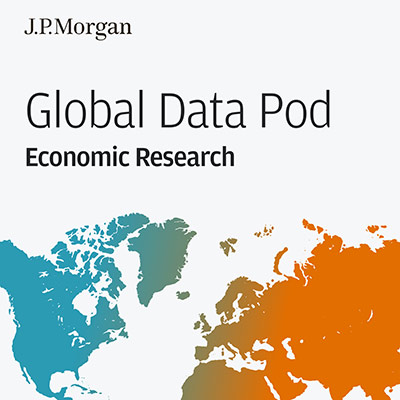From startups to legacy brands, you're making your mark. We're here to help.
-
Innovation Economy
Fueling the success of early-stage startups, venture-backed and high-growth companies.
-
Midsize Businesses
Keep your company growing with custom banking solutions for middle market businesses and specialized industries.
-
Large Corporations
Innovative banking solutions tailored to corporations and specialized industries.
-
Commercial Real Estate
Capitalize on opportunities and prepare for challenges throughout the real estate cycle.
-
Impact Banking & Advisory
When our communities succeed, we all succeed. Local businesses, organizations and community institutions need capital, expertise and connections to thrive.
-
International Banking
Power your business' global growth and operations at every stage.
Key Links
Prepare for future growth with customized loan services, succession planning and capital for business equipment.
-
Asset Based Lending
Enhance your liquidity and gain the flexibility to capitalize on growth opportunities.
-
Equipment Financing
Maximize working capital with flexible equipment and technology financing.
-
Trade & Working Capital
Experience our market-leading supply chain finance solutions that help buyers and suppliers meet their working capital, risk mitigation and cash flow objectives.
-
Syndicated Financing
Leverage customized loan syndication services from a dedicated resource.
-
Commercial Real Estate
Capitalize on opportunities and prepare for challenges throughout the real estate cycle.
-
Employee Stock Ownership Plans
Plan for your business’s future—and your employees’ futures too—with objective advice and financing.
Key Links
Serving the world's largest corporate clients and institutional investors, we support the entire investment cycle with market-leading research, analytics, execution and investor services.
-
Institutional Investors
Putting your long-tenured investment teams on the line to earn the trust of institutional investors.
-
Markets
Direct access to market leading liquidity harnessed through world-class research, tools, data and analytics.
-
Prime Services
Helping hedge funds, asset managers and institutional investors meet the demands of a rapidly evolving market.
-
Global Research
Leveraging cutting-edge technology and innovative tools to bring clients industry-leading analysis and investment advice.
-
Securities Services Solutions
Helping institutional investors, traditional and alternative asset and fund managers, broker dealers and equity issuers meet the demands of changing markets.
Key Links
Providing investment banking solutions, including mergers and acquisitions, capital raising and risk management, for a broad range of corporations, institutions and governments.
-
Center for Carbon Transition
J.P. Morgan’s center of excellence that provides clients the data and firmwide expertise needed to navigate the challenges of transitioning to a low-carbon future.
-
Corporate Finance Advisory
Corporate Finance Advisory (“CFA”) is a global, multi-disciplinary solutions team specializing in structured M&A and capital markets. Learn more.
-
Development Finance Institution
Financing opportunities with anticipated development impact in emerging economies.
-
Sustainable Solutions
Offering ESG-related advisory and coordinating the firm's EMEA coverage of clients in emerging green economy sectors.
-
Mergers and Acquisitions
Bespoke M&A solutions on a global scale.
-
Capital Markets
Holistic coverage across capital markets.
Your partner for commerce, receivables, cross-currency, working capital, blockchain, liquidity and more.
Key Links
A uniquely elevated private banking experience shaped around you.
-
Banking
We have extensive personal and business banking resources that are fine-tuned to your specific needs.
-
Investing
We deliver tailored investing guidance and access to unique investment opportunities from world-class specialists.
-
Lending
We take a strategic approach to lending, working with you to craft the right financing solutions matched to your goals.
-
Planning
No matter where you are in your life, or how complex your needs might be, we’re ready to provide a tailored approach to helping your reach your goals.
Whether you want to invest on your own or work with an advisor to design a personalized investment strategy, we have opportunities for every investor.
-
Invest on your own
Unlimited $0 commission-free online stock, ETF and options trades with access to powerful tools to research, trade and manage your investments.
-
Work with our advisors
When you work with our advisors, you'll get a personalized financial strategy and investment portfolio built around your unique goals-backed by our industry-leading expertise.
-
Expertise for Substantial Wealth
Our Wealth Advisors & Wealth Partners leverage their experience and robust firm resources to deliver highly-personalized, comprehensive solutions across Banking, Lending, Investing, and Wealth Planning.
Explore a variety of insights.
Key Links
Insights by Topic
Explore a variety of insights organized by different topics.
Key Links
Insights by Type
Explore a variety of insights organized by different types of content and media.
Key Links
We aim to be the most respected financial services firm in the world, serving corporations and individuals in more than 100 countries.
Key Links
- Insights
- Global Research
Stay current
NEWSLETTER
Hide
Stay current
Stay current
Sign up for the weekly In Context newsletter, bringing market views and industry news straight to your inbox.
Sign upGlobal
Research
Employing big data analysis, machine learning and other techniques combined with their macro, asset class, sector and company expertise, our award-winning analysts set the industry standard for delivering the most comprehensive and impactful research to clients.
2026 market outlook: A multidimensional polarization
December 09, 2025
Against a backdrop of uneven monetary policy, relentless AI expansion and intensifying market polarization, what’s the outlook for equities, commodities, currencies and more?
LEARN MORELatest research
Video insights
The major themes in healthcare for 2025
The major themes in healthcare for 2025
Chris Schott: As I think about major themes for 2025, M&A really is one of the areas we're going to be paying attention to. We've got balance sheets across the sector in a much better place than they've been. We're seeing the biotech sector, continue to produce innovative medicines that quite honestly can be maximized in the hands of a larger partner or being acquired.
Chris Schott: Another factor driving M&A is really the sector's 2028 and 2029 patent cliff. So we think that that's going to be a motivating factor for the sector.
Chris Schott: When I think about research and development, obesity remains very much top of mind. This is the largest category the industry has ever seen. We're estimating sales approaching $150b by the end of the decade and peak sales that are closer to $200b. We're also expecting data for the first oral GLP one, and something that really unlock the capacity constraints that have impacted the market.
Chris Schott: We continue to see innovation is really a guiding principle for the sector. We've got all these new tools being employed to develop better differentiated drugs. We really don't see that slowing in any meaningful way over the next few years. I think everyone agrees having better, more effective medicines is in every individual, every country, every organization's best interest.
[End of video]
Jess Fye: One major theme we're watching in biotech for 2025 is new drug launches. Innovation is the biggest one for this group every year. I think there's going to be a lot to watch in biotech.
Jess Fye: What we hear from investors on what could attract the most strategic interest in 2025, the hot therapeutic areas are I&I, which is inflammation and immunology, oncology and then cardio renal metabolic.
Jess Fye: They can have decent sized patient population ends as well as pretty healthy pricing. I think the reason folks are attracted to those areas is because the combination of those two can lead to large markets.
Jess Fye: In terms of M&A in biotech in 2024, we saw fewer deals and much lower dollar volume of deals. Thinking about 2025, about half of investors expect that to increase. if I step back, the theme for us is selectivity. We still see innovation running strong in the group. We're expecting solid performance on clinical data readouts as well as drug launches. The reason we think you should be selective is because there is this uncertainty and volatility that's been introduced, and that's going to affect how some of these stocks perform.
[End of video]
From groceries and clothing to haircuts and housing, what we spend on and, more importantly, how much we spend says a lot about the overall economy. All this data is tracked by a tool called the Consumer Price Index. So, how is this index calculated and what can it tell us?
This is the Consumer Price Index: Unpacked.
The Consumer Price Index, or the CPI, tracks changes in the prices of goods and services over time. It dates back to World War One. Prices were increasing rapidly and wages needed to be adjusted. So, in 1921, the U.S. government began publishing the index across major cities every year. A century later, the CPI is the most widely cited barometer of living costs around the world.
It includes thousands of everyday items across various spending categories, and each item is weighted according to its relative importance. For instance, housing is a key component of the CPI as it typically accounts for a large chunk of the average consumer's expenditure.
By monitoring changes in the index, governments can work out if the cost of living is rising or falling. This makes it a useful gauge of inflation and deflation. Most countries update their CPI every month. Every so often, the basket is updated according to consumer buying patterns. In early 2023, the U.S. increased the weight of household furnishings in its CPI to reflect that people were spending more time at home during the pandemic.
The overall CPI figure is often referred to as the Headline CPI. However, economists and policymakers tend to look at Core CPI which excludes food and energy data. This is because the costs that feed into these components, like oil prices, can be quite volatile from month to month.
While the CPI is the most comprehensive source of consumer prices, it's not perfect and doesn't allow for variables. For instance, while it shows aggregate spending, it doesn't reflect the personal experiences of individuals and households. It's also based on the spending patterns of urban consumers and doesn't take into account the buying habits of those living in suburban or rural areas.
This data helps investors make better-informed decisions.
What's more, the index doesn't consider the effects of substitution or the fact that when an item becomes more expensive, people tend to seek out more affordable alternatives.
Despite these limitations, the CPI remains a handy tool for governments, businesses, and society at large. In the U.S., the Federal Reserve uses the CPI to calibrate monetary policy and set interest rates while other government agencies use it to calculate benefit payments and income tax brackets. Employers also often look to the CPI when adjusting wages in line with the cost of living.
In 2008, the Financial Crisis called into question the
industry’s social license to operate: How can the financial system works for
everyone and not just shareholders? In 2015, 196 countries signed the Paris
Agreement to reduce carbon emissions.
All in all, the CPI is an important metric that informs many major decisions and tells us a lot about the health of a country's economy.
Watch our Research Insights to learn about the key trends impacting the global economy.
Research podcasts

Research Recap
Views from our award-winning Research analysts, who discuss sector trends, the state of the global economy and more. Research Recap is part of Making Sense, J.P. Morgan’s podcast from the Commercial & Investment Bank.

At Any Rate
Analysts from J.P. Morgan Global Research take a closer look at the stories behind some of the biggest trends, themes and developments in markets today.

Global Data Pod
Economists from J.P. Morgan Global Research offer their analysis on the economic data, macro trends and monetary and fiscal policy impacting the world today.
Our platforms

J.P. Morgan Markets
Delivering the latest Research, Trading and Post-Trade services to clients.

DataQuery
A portal into the industry-leading proprietary financial market data from Markets Research and Trading.

Global Index Research
Providing insights, bespoke products and informed index management decisions.

JPMaQS
Macro quantamental trading made easy by breaking down the barriers between purely quantitative and fundamental trading styles.
Research in numbers
Research coverage
~870+
analysts located in
25 countries
~75
countries covered
5,200+
companies covered
Best-in-class thought leadership
~100k
pieces of research
Global recognition
Through breadth of our coverage, the depth of our expertise and our commitment to client service, we have become the trusted advisor for clients across the globe. Our top rankings across industry surveys reflect the deep trust and important relationships we have developed with our clients.

Global
Top Global Research Firm (2023)
Institutional Investor
Top Global Fixed Income Research Firm (2023)
Institutional Investor
#2 Global Equity Research Firm (2023)
Institutional Investor
AMERICAS
Top US Fixed Income Research Firm (2023)
Institutional Investor
Top Latin America Fixed Income Research Firm (2023)
Institutional Investor
#2 All-America Equity Research Firm (2023)
Institutional Investor
#3 Latin America Equity Research Firm (2023)
Institutional Investor
Europe
Top Developed Europe Fixed Income Research Firm (2023)
Institutional Investor
Top Emerging EMEA Fixed Income Research Firm (2023)
Institutional Investor
#3 Developed Europe Equity Research Firm (2023)
Institutional Investor
Top Emerging EMEA Equity Research Firm (2023)
Institutional Investor
Asia
#2 Asia (ex-Japan) Fixed Income Research Firm (2023)
Institutional Investor
Top Japan Fixed Income Research Firm (2023)
Institutional Investor
#3 Asia (ex-Japan) Equity Research Firm (2023)
Institutional Investor
Top International Equity Research Firm in Japan (2024)
Institutional Investor
Modal title
You're now leaving J.P. Morgan
J.P. Morgan’s website and/or mobile terms, privacy and security policies don’t apply to the site or app you're about to visit. Please review its terms, privacy and security policies to see how they apply to you. J.P. Morgan isn’t responsible for (and doesn’t provide) any products, services or content at this third-party site or app, except for products and services that explicitly carry the J.P. Morgan name.


